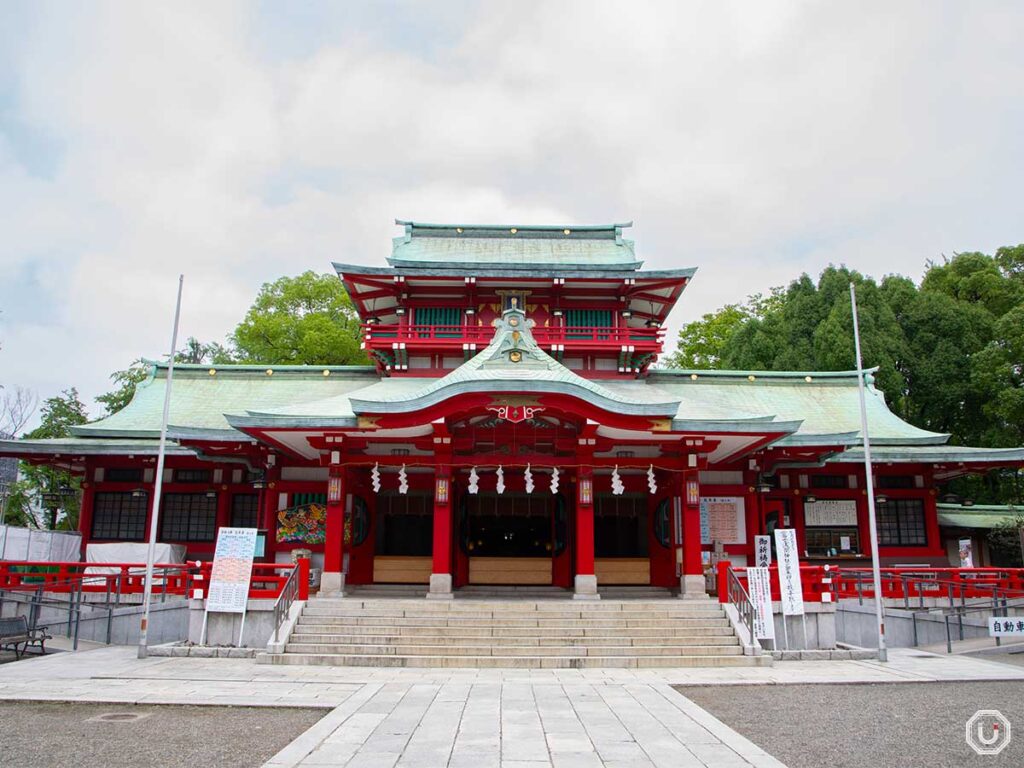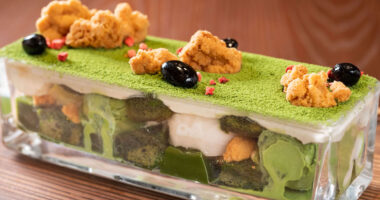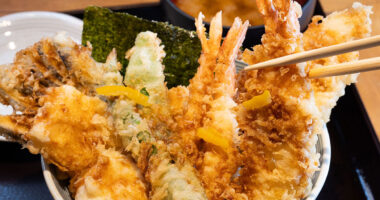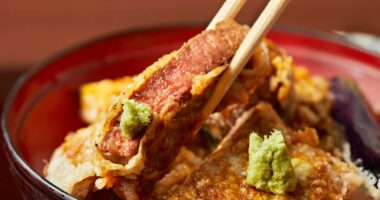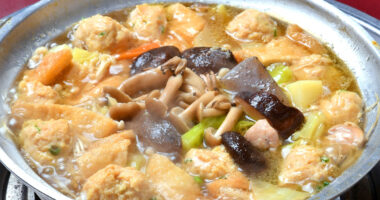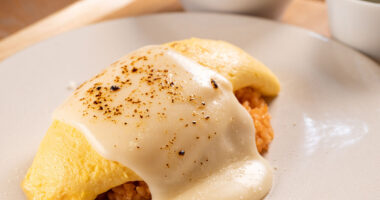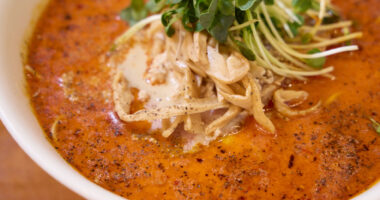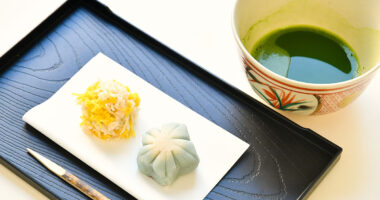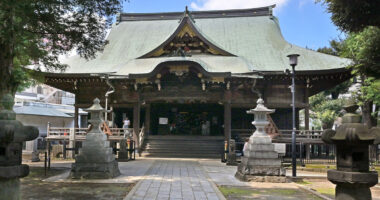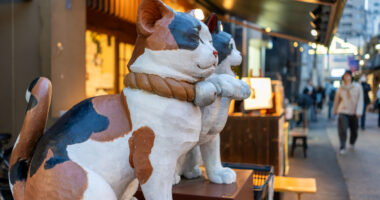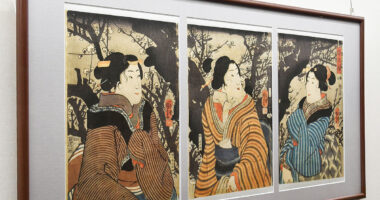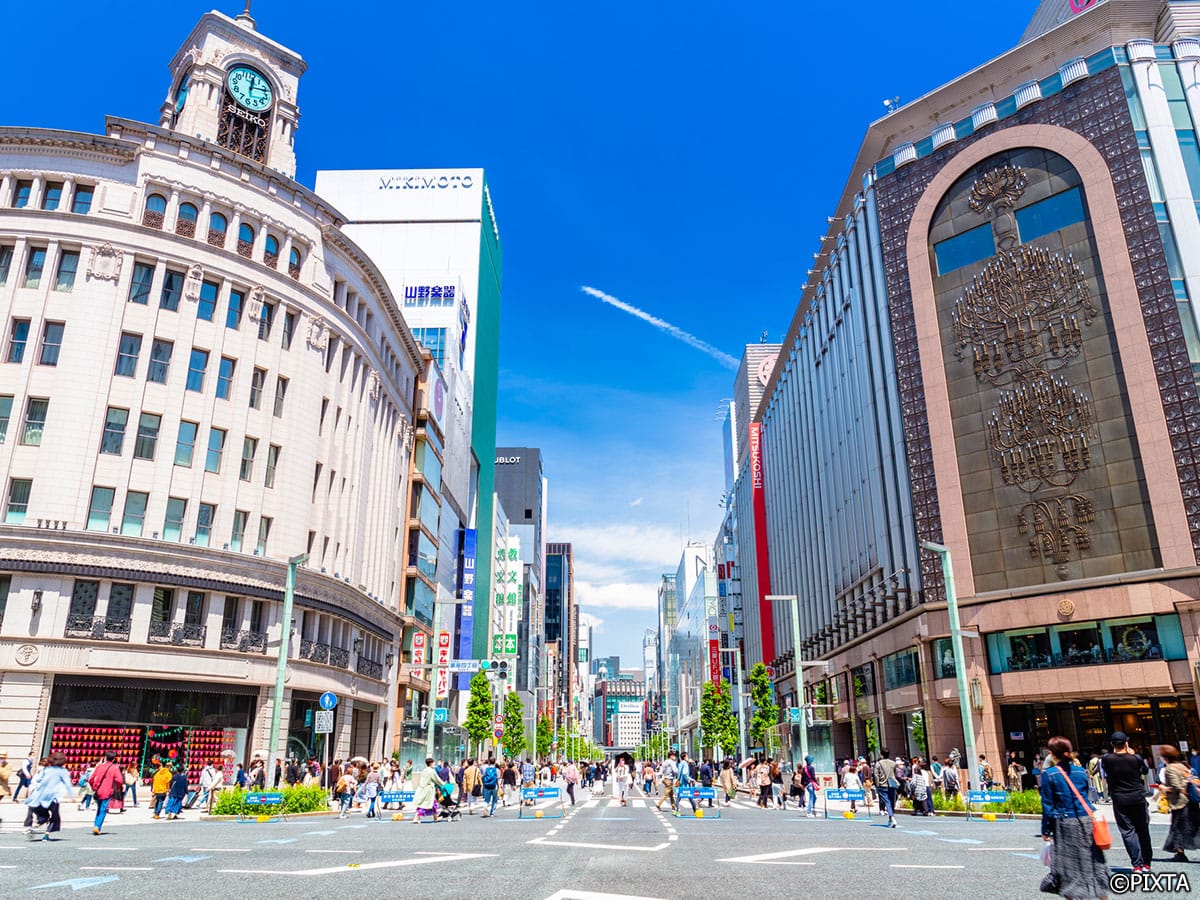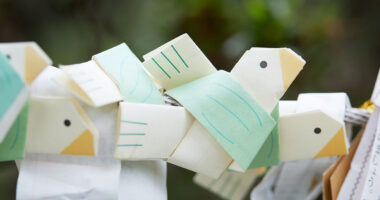Japan’s traditional festivals are known for their vibrant parades centered on mikoshi palanquin. But did you know that the largest mikoshi in Japan is displayed at Tomioka Hachimangu Shrine? This magnificent mikoshi, adorned with diamonds and pure gold, is truly a sight to behold!
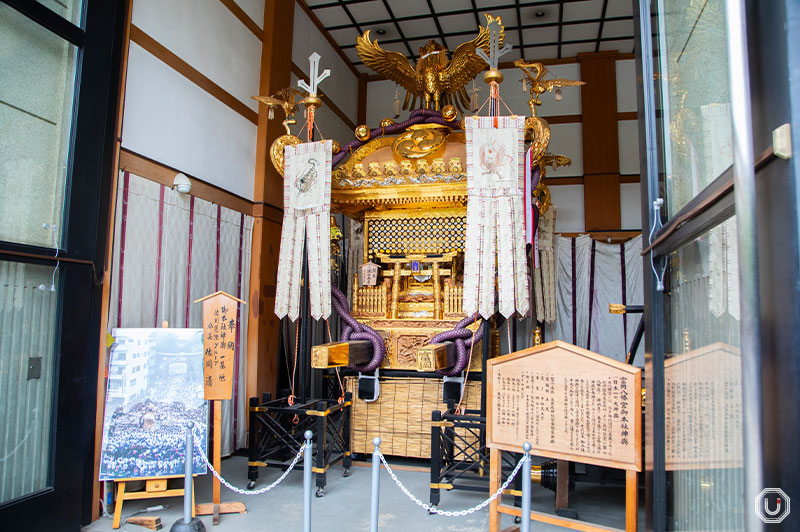
Explore Tomioka Hachimangu Shrine’s 400-year history
Founded in 1627, Tomioka Hachimangu Shrine enshrines Emperor Ōjin as its deity, who is believed to bless visitors with success and good fortune.
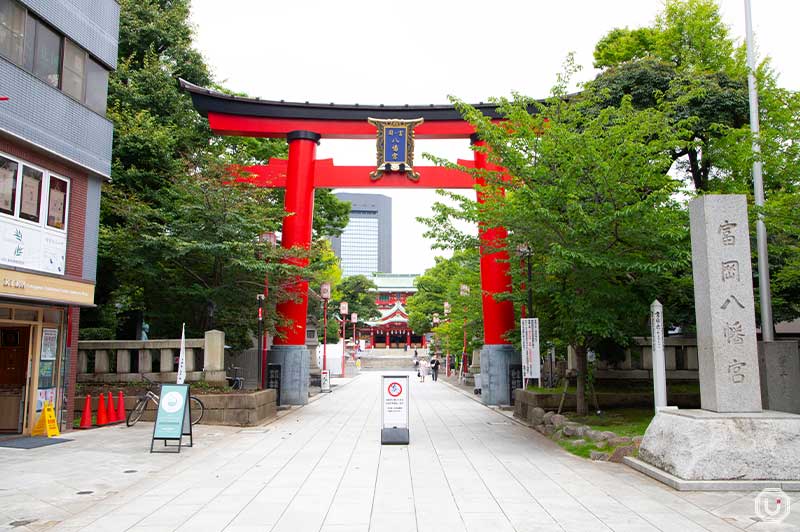
When visiting, be sure to bow at the torii gate before entering. Once inside, cleanse your hands and mouth at the purification water basin called temizuya or chōzuya, meaning “hand water station.”
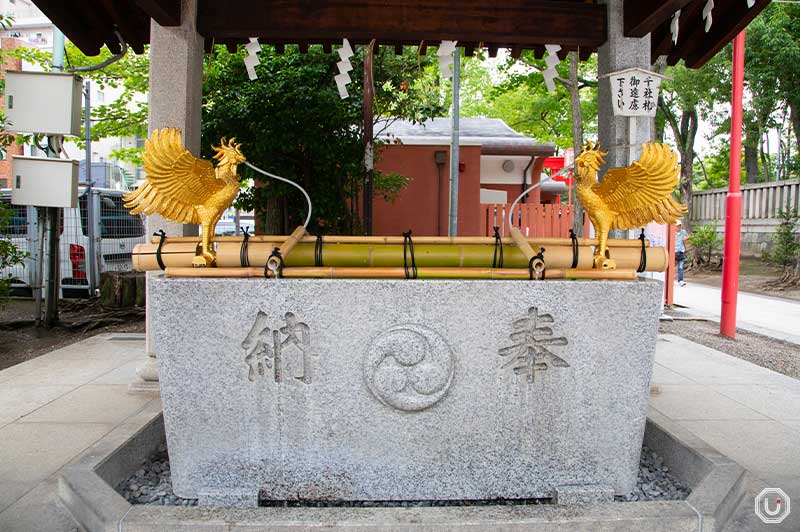
Chōzuya
The shrine’s fountain is guarded by a golden phoenix, a mythical bird from Chinese legend. You’ll feel even more gratitude by cleansing yourself with water from its beak.
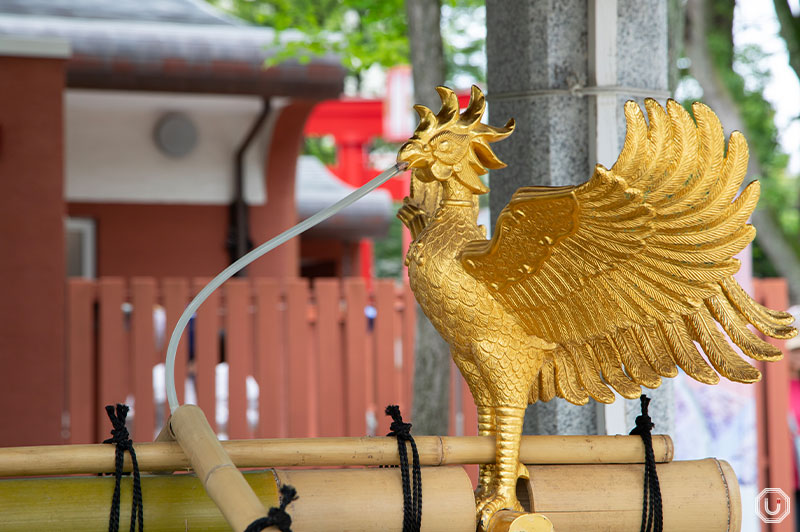
After purifying yourself, proceed to the main shrine. The two interconnected bright vermillion buildings are sure to catch your eye.
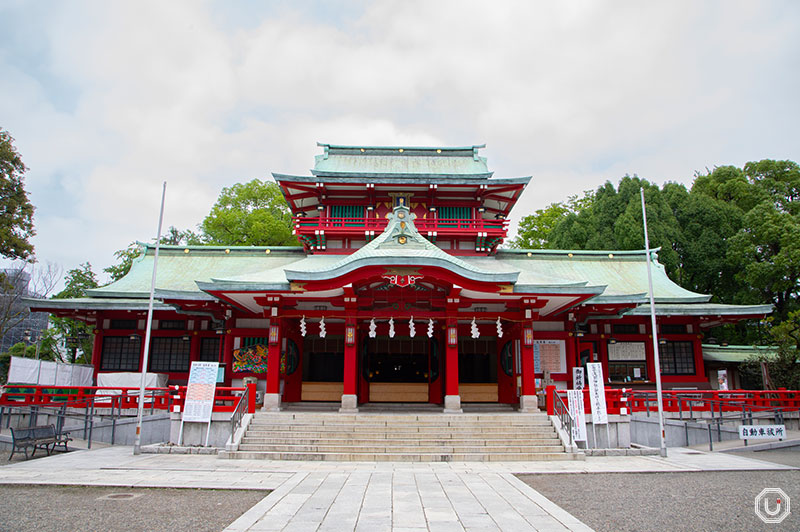
The main shrine of Tomioka Hachimangu
At the main shrine, stand before the offering box, make a donation, and show your gratitude to the gods. Then, bow deeply twice, clap your hands twice, make your wish, and bow deeply once more.
For those unfamiliar with this ritual, there are touch panels in both Japanese and English explaining the steps, so everyone can participate with ease.
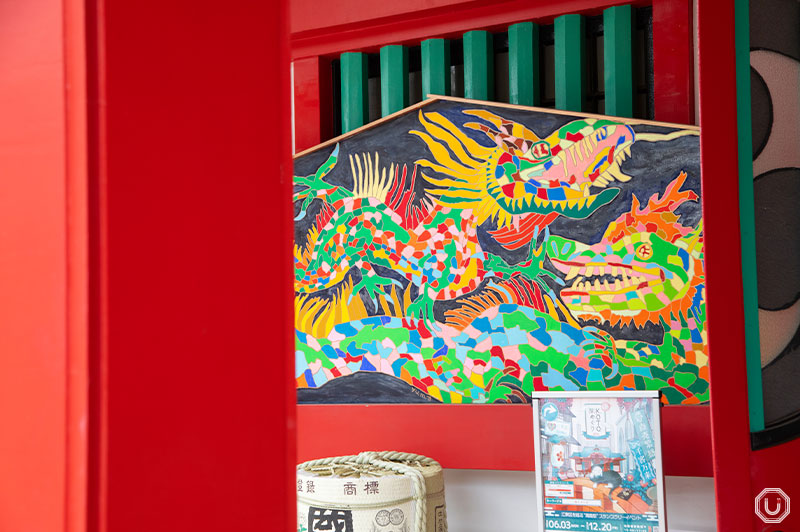
Witness the grandeur of Japan’s largest mikoshi
Two enormous mikoshi, the “Ichinomiya Mikoshi” and “Ninomiya Mikoshi” are stored within the shrine grounds. The Ichinomiya Mikoshi stands over 4 meters (13.1′) tall and weighs an impressive 4.5 tons. It’s no surprise it’s called “Japan’s largest mikoshi.”
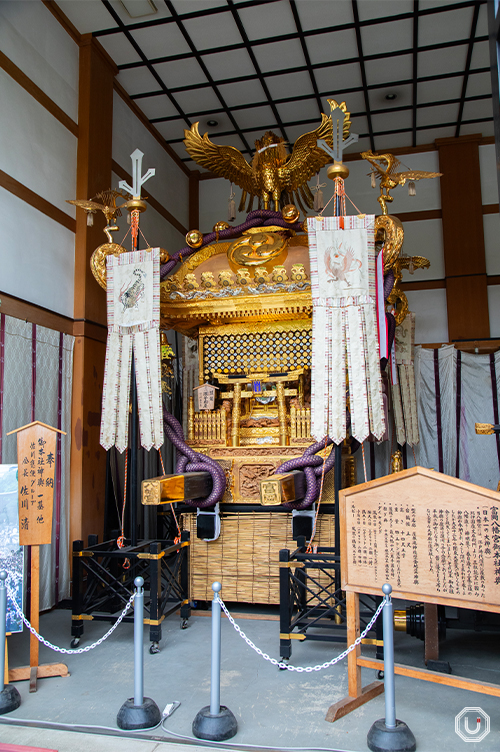
The Ichinomiya Mikoshi
Its luxurious decoration is even more impressive. The roof is covered with 24 kilograms (53 lbs.) of pure gold, and the phoenix on top is adorned with diamonds—4 carats in each eye and 7 carats on its chest.
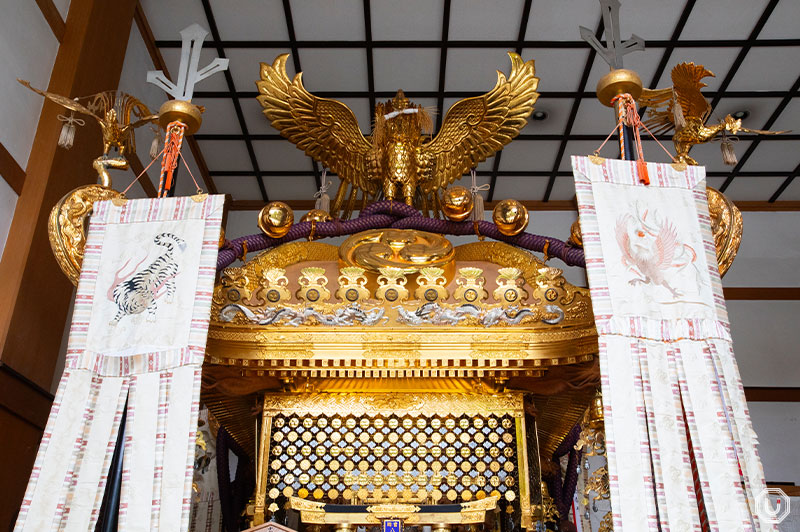
Due to its massive size and weight, the Ichinomiya Mikoshi is not used in festivals. The slightly smaller Ninomiya Mikoshi is paraded instead.
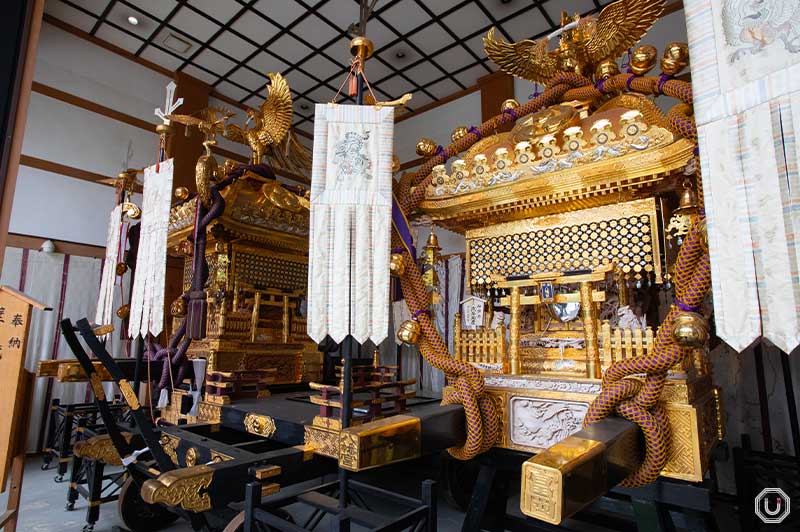
“一の宮神輿,” Ichinomiya Mikoshi (left); ”二の宮神輿,” Ninomiya Mikoshi (right)
The Ninomiya Mikoshi is only paraded once every three years, during the festival held the year after the hon-matsuri (main festival). Seeing this mikoshi carried through the streets is a truly awe-inspiring experience. Be sure to check the festival schedule if you want to witness it.
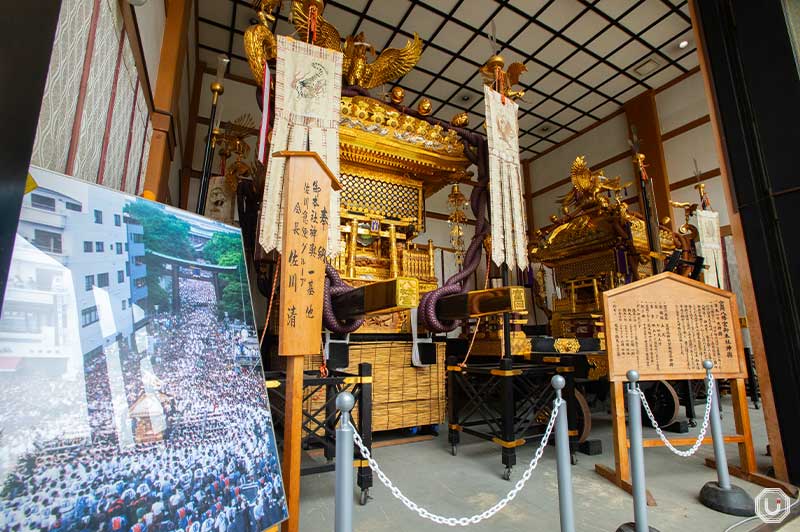
Each August, Tomioka Hachimangu Shrine also hosts the “Fukagawa Hachiman Festival,” one of Tokyo’s three major Edo festivals, sometimes drawing over 500,000 spectators. The festival is known for the unique tradition of splashing water on the mikoshi as they pass by—a perfect way to experience Japan’s summer spirit.
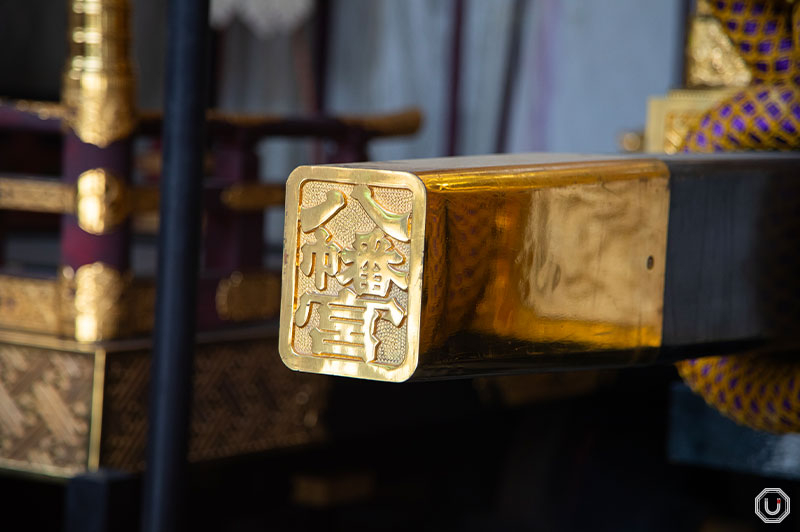
Discover the shrine’s deep connection to sumo
Tomioka Hachimangu Shrine has a long history with sumo wrestling, and is believed to bring good luck in competition. Among the various sumo-related monuments on the shrine grounds is the “Yokozuna Rikishi Monument.”
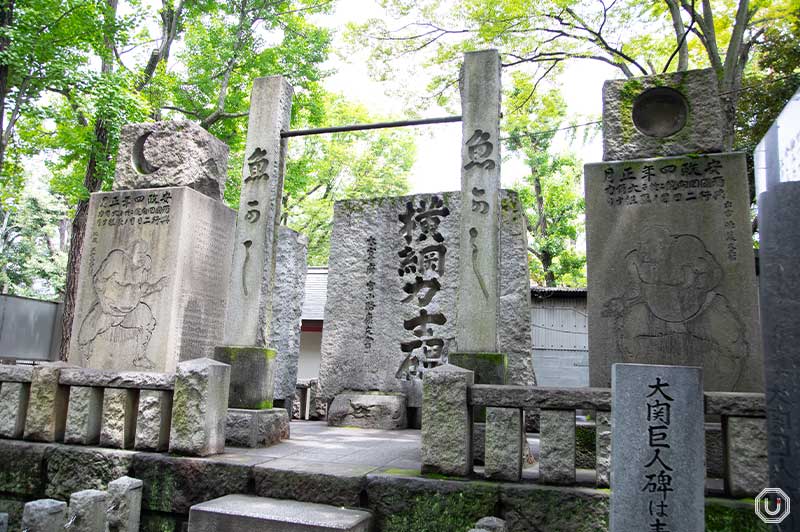
Yokozuna Rikishi Monument
This stone monument, built in 1900, honors the historical succession of yokozuna, the highest rank in sumo. Standing 3.5 meters (11.5′) tall and weighing 20 tons, the monument’s imposing presence is reminiscent of a yokozuna in the ring. When a new yokozuna is promoted, a special ceremony is held to engrave their name on the monument.
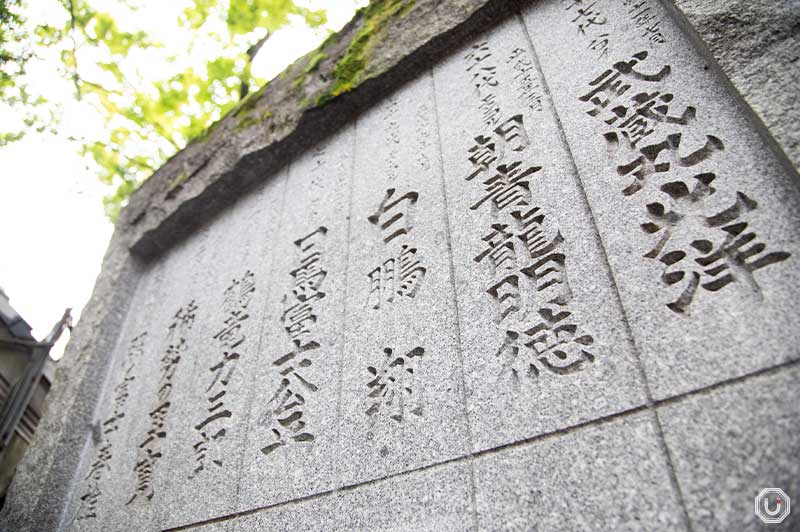
The names of past yokozuna such as Asashoryu, Hakuho, and Harumafuji are engraved
Other notable monuments include the “Ōzeki Rikishi Monument,” which honors past great rikishi (sumo wrestlers) of the ōzeki (immediately below yokozuna) rank, and the “Giant Rikishi Handprint and Footprint Monument,” where visitors can compare their hand size to that of a sumo wrestler. Even if you’re not a sumo fan, you’ll surely be tempted to give it a try!
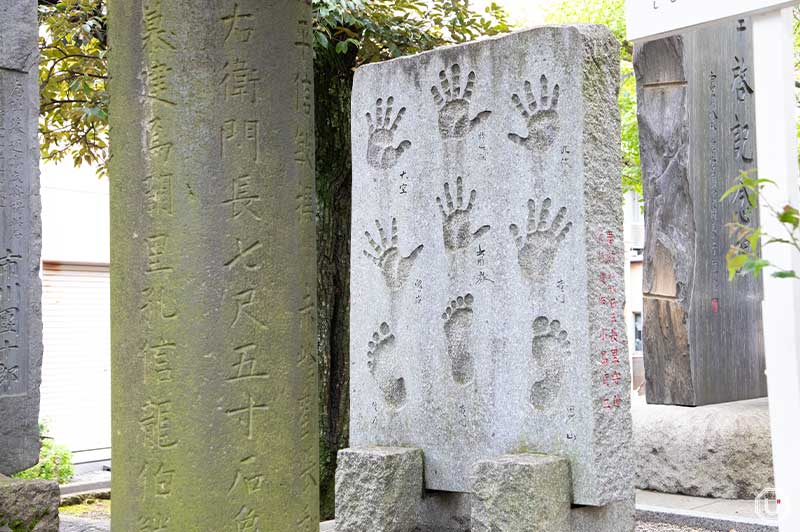
Giant Rikishi Handprint and Footprint Monument
Unique votive tablets and seals make perfect souvenirs
Tomioka Hachimangu Shrine offers a variety of ema, wooden votive plaques on which visitors write their wishes. One standout is the rikishi ema, featuring a powerful depiction of a sumo wrestler. After writing your wish, you can dedicate it to the shrine by attaching it to the ema board.
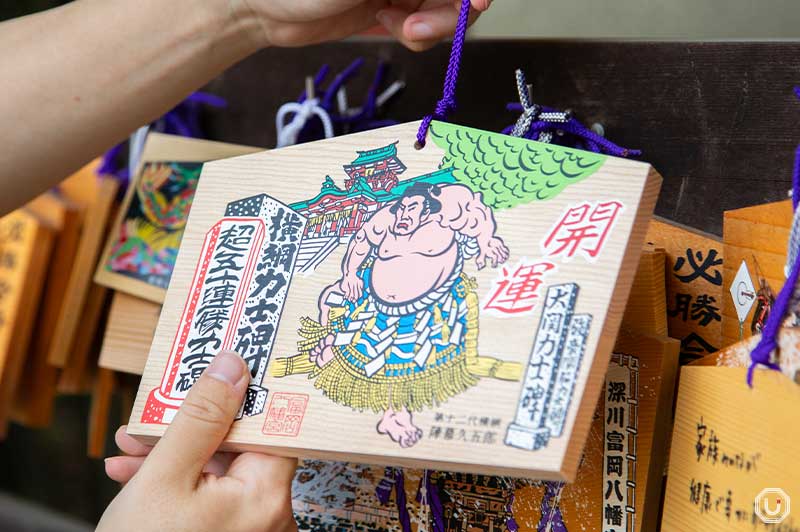
Rikishi ema 1,500 JPY
Don’t forget to pick up a goshuin (a special seal obtained at Japanese shrines or temples as proof of pilgrimage). Tomioka Hachimangu Shrine offers a special goshuin featuring a mikoshi stamp inspired by the Ichinomiya Mikoshi.
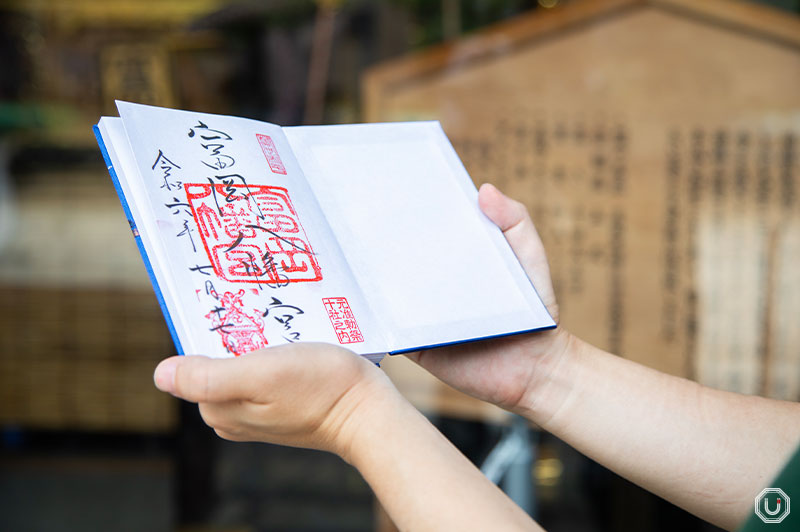
Goshuin 500 JPY
You can also obtain a beautifully designed goshuinchō (seal book) to collect goshuin seals. The cover features the shrine’s main building on its front cover and a scene from the Fukagawa Hachiman Festival on its back cover, highlighting the festival’s importance to the shrine.
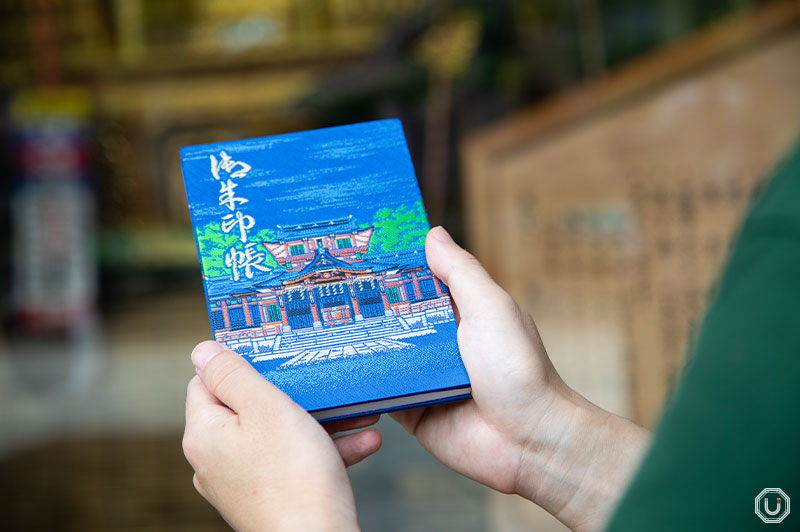
Goshuincho 1,500 JPY
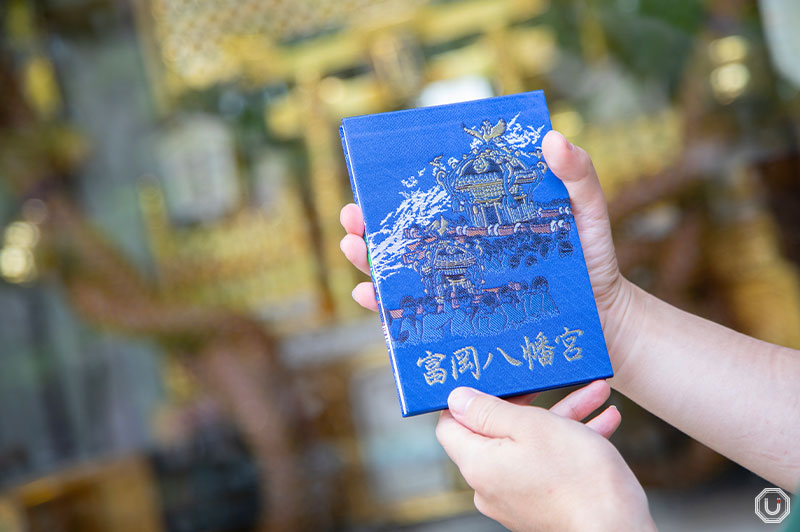
Find a charm for every wish
Tomioka Hachimangu Shrine offers a unique omamori (amulet available at Japanese shrines and temples and granting good luck or protection) in the shape of a magatama (a comma-shaped stone jewel talisman) called petto mamori, designed to pray for the healthy growth of your pets and for “happy days spent with your furry friends.” Many families attach it to their pets’ collars.
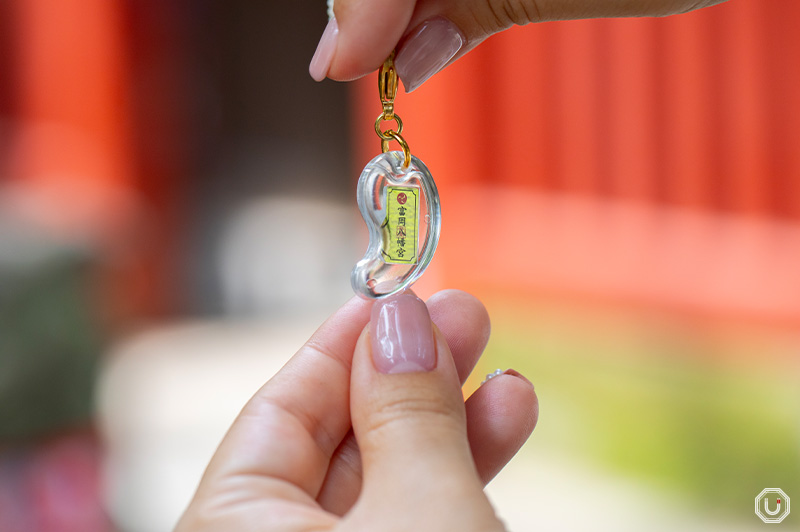
“ペット守 勾玉,” petto mamori magatama 800 JPY
You can also find charms featuring the beloved Sanrio character Hello Kitty, charms for academic success, and charms for victory in competitions. There’s a charm to match every wish you could have, so take a look!
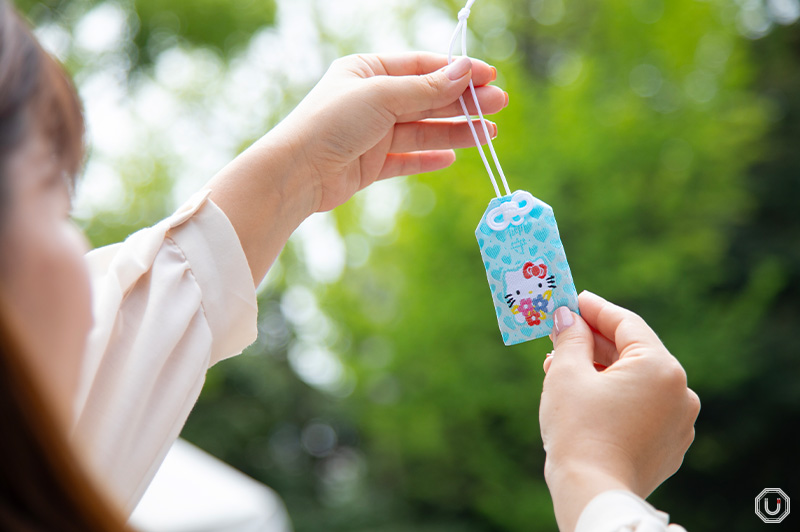
“キティ守,” Kitty mamori (large) 800 JPY
Tomioka Hachimangu Shrine is also home to a series of torii gates and Edo-period guardian komainu (lion-dog) statues, offering plenty of spots to soak in the traditional atmosphere. Take your time exploring the shrine grounds during your visit.
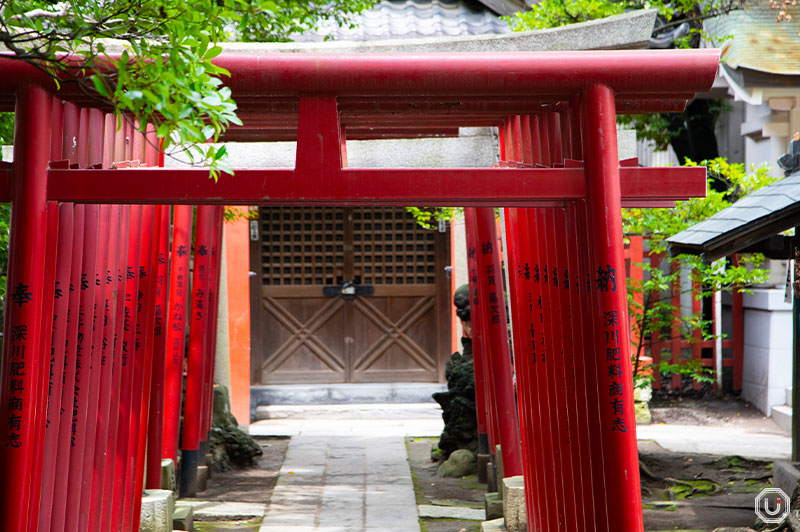
Shrine Information
| Name | 富岡八幡宮 Tomioka Hachimangu Shrine |
|---|---|
| Address | 1-20-3 Tomioka Koto-ku Tokyo
|
| Access |
Monzen-nakacho Station 3-minute walk from Monzen-nakacho Station Exit 1
|
| Phone number | 03-3642-1315 |
| Visiting Hours | 24 hours |
| Sacred Items | 9:00-17:00 |
| Goshuin | 9:00-17:00 |
| Omikuji | 9:00-17:00 |
| Admission fee | Free |
| Official website | http://www.tomiokahachimangu.or.jp/ |
| Other information |
|
※The information in this article is current as of August 2024.
